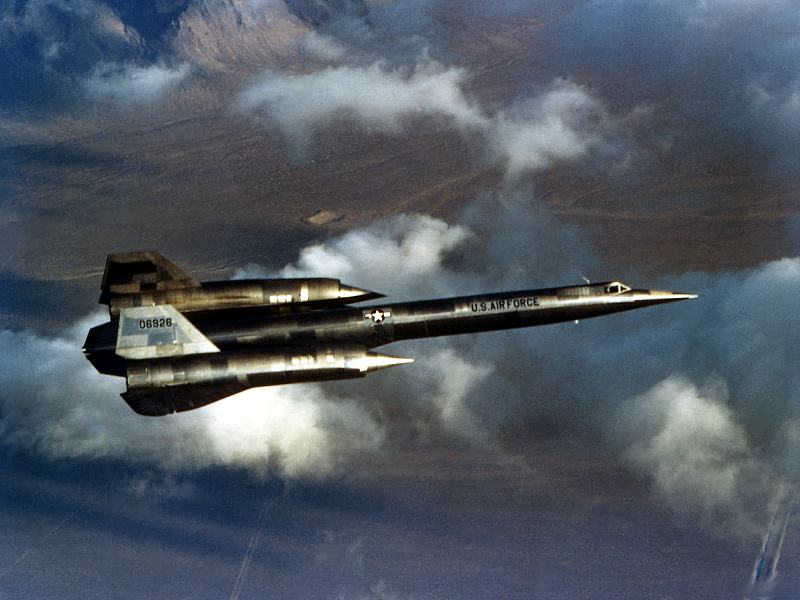OXCART Down! - Searching for the remains of a secret spy plane
By Peter W. Merlin, October 2003

A-12 (60-6926/Article 123) in flight over Nevada. It wore a mostly natural metal finish, but the chines and portions of the wing edges were painted black. Air Force markings, national insignia, and serial numbers were painted on top of areas covered with a gray primer.
|
The OXCART from Area 51
In 1959, the Central Intelligence Agency (CIA) established project OXCART to develop and field an operational high-speed, high-altitude reconnaissance airplane to replace the U-2, which was becoming vulnerable to improved air-to-air missiles. The result was the Lockheed A-12, a titanium and composite airplane capable of cruising at Mach 3.2 and attaining altitudes up to 90,000 feet. For test and training flights, the A-12 fleet operated from a secret air base called Area 51 at Groom Lake, Nevada. Lockheed test pilots and members of the CIA's 1129th Special Activities Squadron "Roadrunners" flew the airplanes from April 1962 until June 1968 when the A-12 fleet was retired.
For decades, the existence of the A-12 fleet was shrouded in secrecy. During the first two years of operation, it was completely unacknowledged. A first public glimpse of it came on 29 February 1964, when President Lyndon B. Johnson announced the existence of the YF-12A interceptor prototype that had been flying at Area 51 since August 1963. In his statement to the press, Johnson intentionally misidentified the prototype as the "A-11" and said it was operating from Edwards Air Force Base, California. The airplanes were hurriedly flown to Edwards to support the President's announcement. Although the popular press often referred to the airplane as the A-11, the YF-12A designation eventually fell into common use and the application of an overall flat black finish earned it the name "Blackbird." The few released photos of the YF-12A showed an airplane very similar to the still-secret A-12. Anyone who happened to see an A-12 in flight would probably assume it was a YF-12A. In December 1964 another member of the A-12 family made its debut as the SR-71A, an Air Force reconnaissance plane that soon joined the YF-12A at Edwards. The SR-71 looked even more like the A-12 than did the YF-12A. This helped preserve the anonymity of the A-12 airplanes later deployed to Okinawa, Japan, for Operation Black Shield. Personnel who worked on the project usually didn't use the term "A-12." Instead, they referred obliquely to "the Article" and spoke of individual airplanes as "Article 121" or "Ship 125," using their Lockheed build numbers. Consequently, the A-12 remained "in the black" until 1982 when the surviving airframes were moved to outdoor storage at a Lockheed facility in Palmdale, California. Public curiosity about the sudden appearance of these "SR-71 Blackbirds" resulted in a brief press release about the history of the A-12 and a declassified photo. But until that time, the A-12 was unknown to the public.
OXCART Down! continues here:
© Copyright 1999-, Dreamland Resort. All rights reserved. Copyright Policy Privacy Policy Page last modified 09/11/2007
